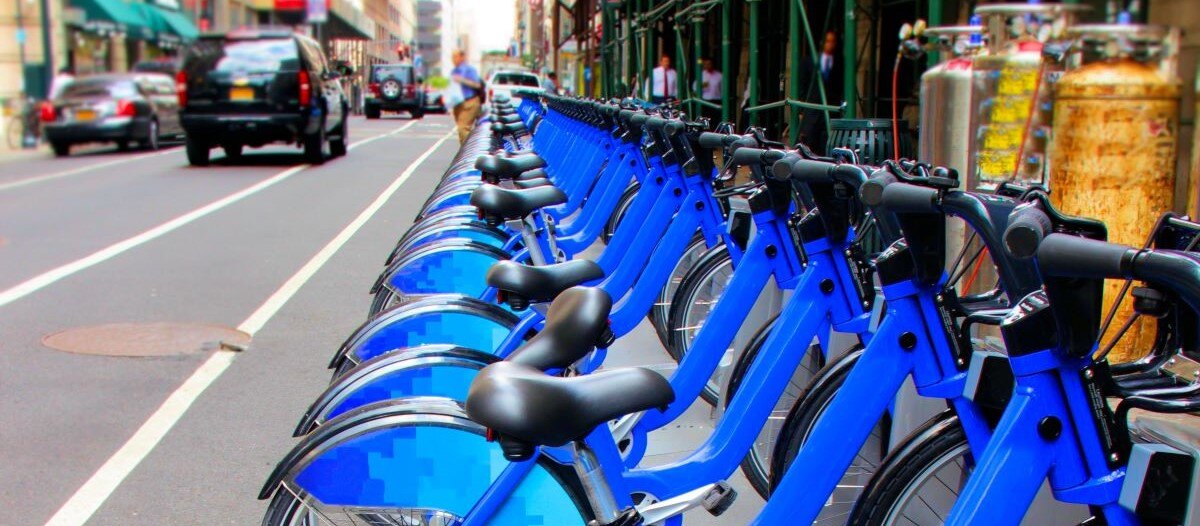Mitigating Hazards
7 steps to prevent E-bike-related fires

The growing popularity and prevalence of e-bikes and e-scooters has caused a major global challenge: preventing fires that are too often started by charging their lithium-ion batteries. Facility managers can take proactive steps to prevent the worst impacts of those fires. For example, New York City (NYC), New York, USA, has about 65,000 e-bikes on its streets – more than any other U.S. city – and is, as the Associated Press reports, “the epicenter of battery-related fires.” The 666 battery-triggered fires in NYC since 2019 resulted in 28 deaths and 412 injuries, according to The City That includes nearly 270 such fires in 2023 alone.
The problem is far broader. About 1.1 million e-bikes were imported to the United States in 2022. Globally, there were more than 280 million electric mopeds, scooters, motorcycles and three-wheelers on the road in 2022.
Given the extraordinary number of e-bikes, e-scooters and related fires, governments are increasingly taking action to reduce the potential for those fires. China, for instance, is reportedly preparing to set mandatory national standards on e-bike batteries.
NYC became the first U.S. city to ban the sale of e-mobility devices and batteries that do not meet industry safety standards. It has also initiated several voluntary trade-in programs to remove unsafe e-bikes from the streets and is pursuing installing outdoor charging stations. The City also recently filed criminal charges against an e-bike shop owner, accused of selling illegal uncertified batteries and charging them unsafely.
The problem, however, is largely one of charging the batteries indoors, and this is where it affects FMs. The problem is further aggravated by a lack of regulation and a second-hand market that leaves more e-bikes and e-scooters in varying conditions of disrepair.
E-bikes and e-scooters are often stored in commercial and residential facilities, where a sudden fire can burst forth with stunning intensity. At one such fire, NPR quoted New York City’s fire commissioner as saying: “This entire building behind me is completely destroyed. The roof is caved in. There is nothing left. And it is all because of this one single bike.”
Even when the devices are parked in a safe place, the batteries are often removed and charged in settings where office or household belongings are nearby, making a fire all the more damaging. The fact that those batteries can typically be charged using a standard electrical outlet only magnifies the problem – with potentially catastrophic effects.
What can FMs do? Here are 7 steps:
- First, create a designated storage space where e-bikes and e-scooters can be stored and charged for free. The concept is like providing space for traditional bike storage.
- Second, reinforce the space in terms of fire prevention, so that if a fire breaks out, it is contained. That reinforcement could include fire-rated walls, fast-acting sprinkler heads and fire detection devices. Self-closing doors would ensure that fire and smoke cannot spread within the building.
- Third, make the designated space large enough to suit demand and include enough electrical outlets so each device in the space can be charged. The design of the outlets should reflect the size of the possible load at any time, thereby preventing the risk of fire from circuit overloading.
- Fourth, provide 24-hour monitoring of the designated space, with cameras displaying images at the security desk. Security officials can then monitor the devices and be alerted if a fire occurs.
- Fifth, ensure that batteries are properly charged, not over-charged. Batteries for e-bikes and e-scooters typically do not have a battery management system that can detect and arrest battery issues before thermal runaway. It is vital, therefore, to watch how long they are charged.
- Sixth, train security personnel in how to deal with a lithium-ion battery fire in any e-bike or e-scooter. Be sure they know exactly what to do if a fire occurs. Training and fire action plans for personnel to respond to such an event are crucial.
- Seventh, prohibit the storage and charging of e-bikes and e-scooters – or their batteries – elsewhere. Workers at relevant facilities and apartment residents should understand the dangers of lithium-ion battery fires and the advantages of the designated storage space. If properly informed, they should be willing to comply. From a safety standpoint, it is in their best interest, too.
Failure to comply can also be written into leases as reason for eviction, as the consequences of improper storage and charging of these devices are literally a matter of life and death.
E-bikes and e-scooters will likely grow in use, and they have great environmental benefits. They provide an alternative to fossil fuels and are far more fuel-efficient than larger vehicles.
Yet, FMs will need to protect their properties from charging practices that too often yield tragic fire hazards. In doing so, they will help the world pursue lower carbon emissions.

Daniel Colombini is a principal at Goldman Copeland, a New York City-based consulting engineering firm. He is an expert at leading multidisciplinary design initiatives and large-scale programs for many of the tri-state area’s paramount commercial and institutional clients. He manages all mechanical engineering upgrades for Empire State Properties and has been project manager for MEP engineering services in numerous historic buildings and cultural institutions. Colombini plays a key role in the operations of such renowned institutions as the Empire State Building, Hospital for Special Surgery, The Morgan Library & Museum, New York-Presbyterian Hospital, New York University, Scholastic Inc., Vornado Realty Trust, and several historic Broadway theaters. His experience grows out of his earlier focus on plumbing and fire protection engineering for which he received national recognition, being honored as Engineer of the Year in 2018 by Plumbing Engineer magazine.

Vinod Palal is a principal and senior electrical engineer at Goldman Copeland, a New York City-based consulting engineering firm. He is an expert in electrical engineering with more than 20 years of experience in design and specification of electrical systems including lighting, power distribution, life safety and fire alarm systems, and communications and security systems. Palal manages multidisciplinary design projects for commercial, institutional and cultural properties throughout the Greater New York City area. His notable projects and clients have included Audible’s headquarters, the City of New York, the Empire State Building, Hackensack Meridian Health, The Morgan Library & Museum, and National Grid. He has extensive experience in both new construction and rehabilitation projects.
Read more on Technology , Occupancy & Human Factors and Risk Management
Explore All FMJ Topics









